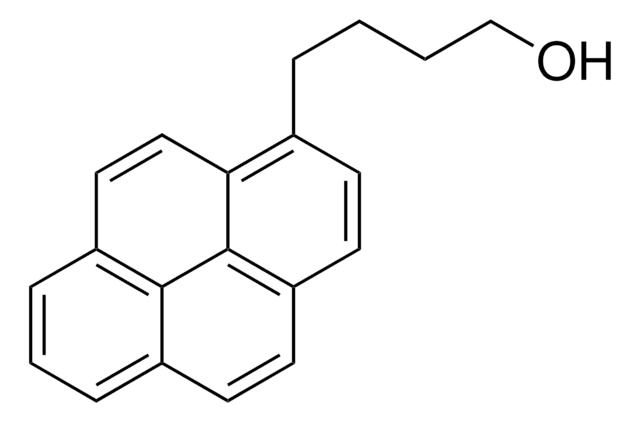447927
Di(ethylene glycol) methyl ether methacrylate
95%
Synonym(s):
2-(2-Methoxyethoxy)ethyl methacrylate
About This Item
Recommended Products
assay
95%
contains
100 ppm hydroquinone monomethyl ether as inhibitor
300 ppm butylated hydroxytoluene as inhibitor
refractive index
n20/D 1.44 (lit.)
bp
98 °C/3.5 mmHg (lit.)
density
1.02 g/mL at 25 °C (lit.)
storage temp.
2-8°C
SMILES string
COCCOCCOC(=O)C(C)=C
InChI
1S/C9H16O4/c1-8(2)9(10)13-7-6-12-5-4-11-3/h1,4-7H2,2-3H3
InChI key
DAVVKEZTUOGEAK-UHFFFAOYSA-N
Application
- Tunable Cell-Adhesive Surfaces by Surface-Initiated Photoinduced Electron-Transfer-Reversible Addition-Fragmentation Chain-Transfer Polymerization.: This research utilizes Di(ethylene glycol) methyl ether methacrylate in the development of tunable cell-adhesive surfaces, crucial for biomedical applications such as tissue engineering and medical device manufacturing, due to its capacity for precise surface chemistry modifications (Kuzmyn et al., 2024).
- Temperature-Responsive Aldehyde Hydrogels with Injectable, Self-Healing, and Tunable Mechanical Properties.: This study demonstrates the use of Di(ethylene glycol) methyl ether methacrylate in creating temperature-responsive hydrogels, offering significant potential in medical device applications for minimally invasive surgical technologies and drug delivery systems (Zhao et al., 2022).
- Investigation of the Thermogelation of a Promising Biocompatible ABC Triblock Terpolymer and Its Comparison with Pluronic F127.: Highlighting its application in pharmaceutical formulations, this research explores the thermogelation properties of polymers including Di(ethylene glycol) methyl ether methacrylate, important for developing controlled drug release systems (Constantinou et al., 2022).
- Fabrication and Impact of Fouling-Reducing Temperature-Responsive POEGMA Coatings with Embedded CaCO(3) Nanoparticles on Different Cell Lines.: The study employs Di(ethylene glycol) methyl ether methacrylate in developing advanced coatings for biomedical devices, aiming to reduce fouling and enhance device longevity and functionality in clinical settings (Lishchynskyi et al., 2021).
- Nonionic UCST-LCST Diblock Copolymers with Tunable Thermoresponsiveness Synthesized via PhotoRAFT Polymerization.: This article presents the synthesis of unique block copolymers incorporating Di(ethylene glycol) methyl ether methacrylate, which are valuable in creating smart materials for dynamic biomedical and industrial applications (Xu & Abetz, 2021).
signalword
Warning
hcodes
Hazard Classifications
Eye Irrit. 2 - Skin Irrit. 2 - Skin Sens. 1 - STOT SE 3
target_organs
Respiratory system
Storage Class
10 - Combustible liquids
wgk_germany
WGK 3
flash_point_f
235.4 °F - closed cup
flash_point_c
113 °C - closed cup
ppe
Eyeshields, Faceshields, Gloves, type ABEK (EN14387) respirator filter
Certificates of Analysis (COA)
Search for Certificates of Analysis (COA) by entering the products Lot/Batch Number. Lot and Batch Numbers can be found on a product’s label following the words ‘Lot’ or ‘Batch’.
Already Own This Product?
Find documentation for the products that you have recently purchased in the Document Library.
Customers Also Viewed
Our team of scientists has experience in all areas of research including Life Science, Material Science, Chemical Synthesis, Chromatography, Analytical and many others.
Contact Technical Service









